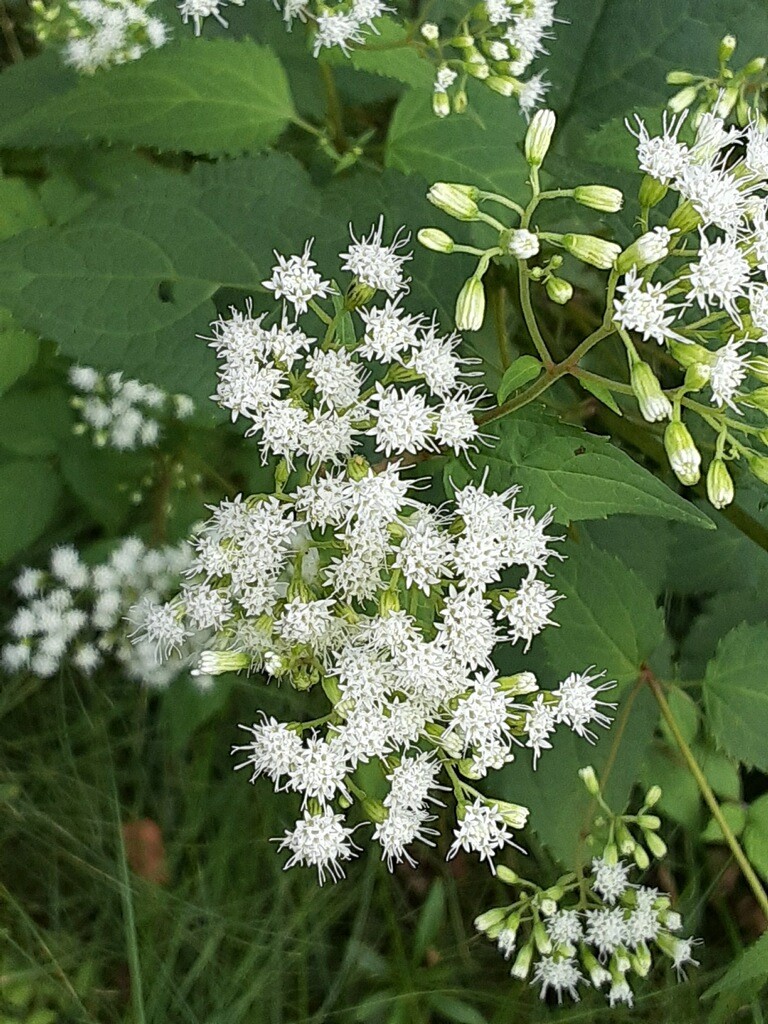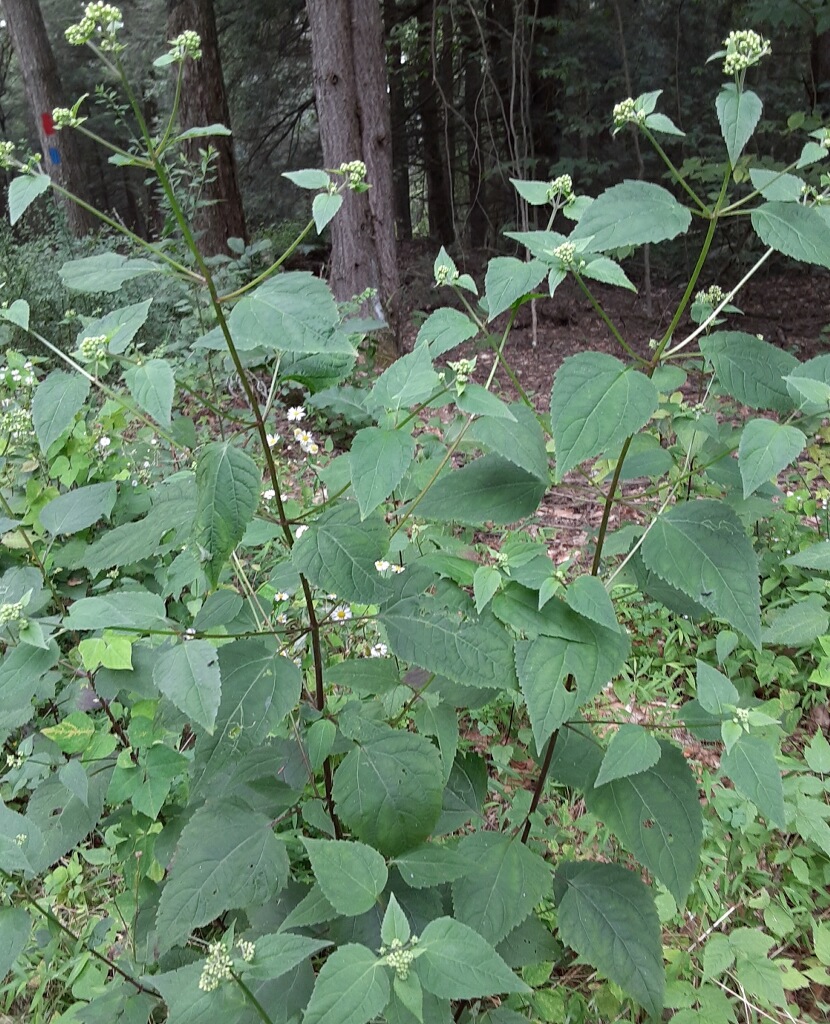By Susan Sprout
White Snakeroot is blooming now through October, depending on the weather. The heavy rain and hail last week may have taken a toll on their white, fuzzy-looking flower heads.

Members of the Aster Family, they are unlike many of their relatives such as daisies with composite or compound flower heads, because they do not have any ray florets or petals surrounding the middle of the bloom. Instead, the whole flat-topped flower head is composed of white disk flowers that on closer inspection look like little tubes with five lobes at their tops. The male part of the flower is white and Y-shaped and sticks out beyond the tubes. That is what makes the flowers look fluffier. After pollination, the disk flowers will be replaced by tiny black seeds, about one-tenth of an inch long, with five ridges on their sides. A small tuft of white hair on each one helps with distribution by the wind.
White Snakeroot is a native perennial plant with thin green to brown round stems. Their opposite leaves are oval-shaped and can be coarsely to sharply toothed. They flourish in deep shade to full sun and are common in woods, meadows, and along roads. The whole plant has a rather angular look to it with the flower heads jutting straight off above the leaf pairs!
Every part of this plant, living or dried, can be fatal to humans and domestic livestock if they have drunk the milk of animals that have eaten it. In the early 19th century, “milk sickness” claimed the lives of thousands of people unfamiliar with White Snakeroot and had used it as forage for their livestock. Abraham Lincoln’s mother is said to have died after using this toxic plant. Do look this up and read more about who discovered White Snakeroot was actually the cause of this horrible sickness!


